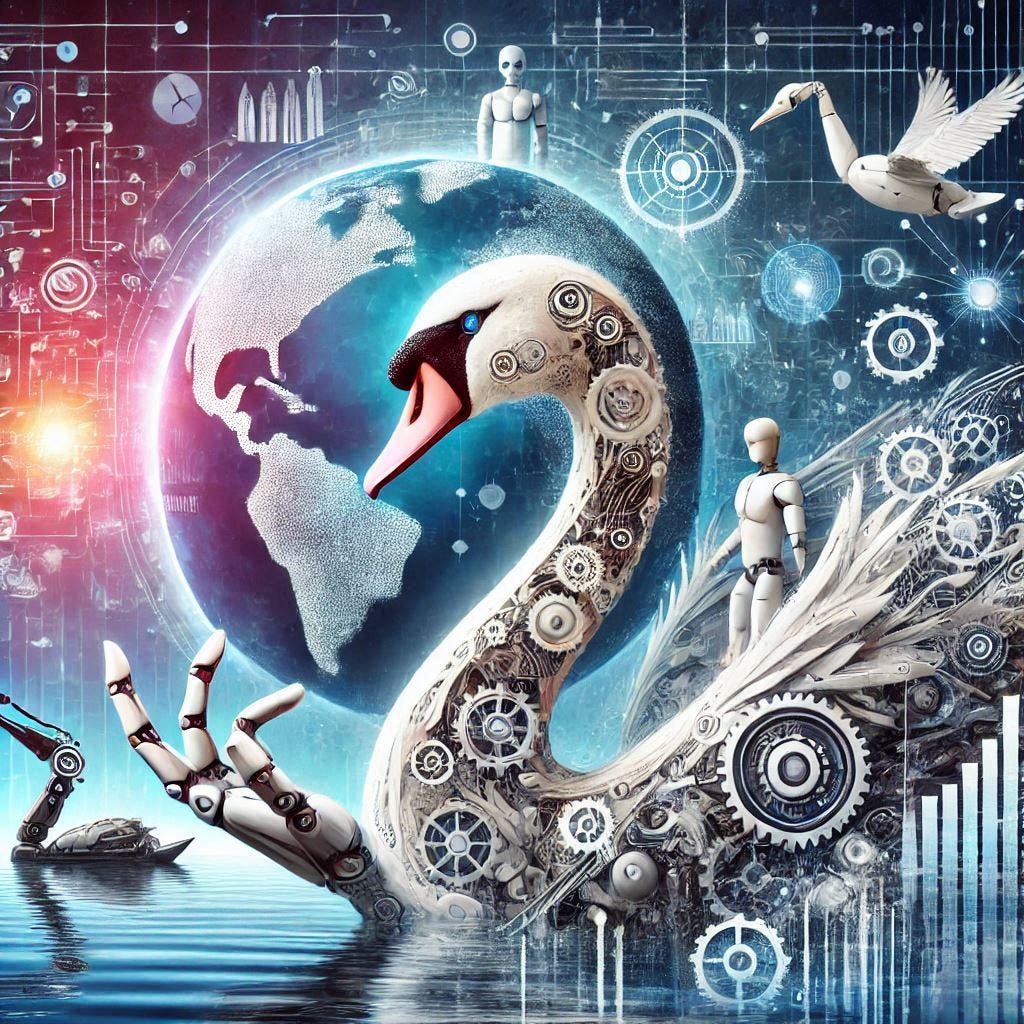As we recover from the shocks of 2024 and navigate uncertainties ahead of the new US administration taking office in January, it’s time to explore emerging trends and prepare for the opportunities and challenges presented in 2025.
Amid the widespread focus on “risks” and the bleak geopolitical landscape suggested by Donald Trump during his campaign, industry analyst Nobunaga Chai, affiliated with Cloud Express and an independent consultant, challenges conventional wisdom. He questions: what if businesses make overly defensive decisions to avoid risks but overlook unexpected opportunities?
In contrast to a “Black Swan,” a term coined by author Nassim N. Taleb to describe unforeseen events with significant consequences, Chai highlights the importance of being aware of “White Swans.” These represent positive, foreseeable opportunities that could significantly influence the economy but may be missed due to prevailing pessimism or risk aversion.
Potential White Swan Candidates
Peace Treaties and Reconstruction Dividends: An end to the Russia-Ukraine War could stabilize commodity prices and help rein in inflation. Additionally, a truce between Israel and Hezbollah, along with the potential for regime change in Syria, suggests emerging prospects for peace and economic benefits in post-war reconstruction.
Technological Innovations: Breakthroughs in artificial intelligence (AI), robotics, and quantum computing could spur new industries, job creation, and increased productivity. Predictions for 2025 indicate a boom in humanoid robots for factories and homes, with Oxford Economics stating that the robotics revolution is upon us. Jim Fan, NVIDIA's Senior Research Manager, notes that while 2024 focused on prompt engineering, 2025 will emphasize reward engineering.
Agentic AI: This refers to AI systems capable of autonomous action within specific environments, making decisions or executing tasks without human intervention. These AI agents learn, adapt, and optimize their actions based on diverse inputs, presenting significant technological development and potential for AI monetization.
Unexpected Thawing of U.S.-China Relations: Chai posits that improved relations can develop, referencing Trump’s initial success in negotiating with China during his first term. He suggests that the outcome may exceed expectations if tariff threats are only negotiation tools.
While Trump indicated plans to raise tariffs on Chinese imports to 60%, he also announced intentions for an additional 10% tariff on goods from China in late November. According to the Peterson Institute for International Economics (PIIE), if all campaign promises—including tariffs, driving out immigrants, and influence over the Federal Reserve—are enacted, the U.S. GDP could shrink by an average of 3.5% (ranging from -1.3% to -5.7%), with inflation potentially rising by at least four percentage points in 2025.
Chris Miller, author of Chip Wars, advised researchers from Taiwan's Research Institute for Democracy, Society, and Emerging Technology (DSET), that component-based tariffs could emerge, offering a targeted approach compared to taxing final products. However, a veteran in the semiconductor industry warned TechSoda that a blanket tariff on all chip imports from China could adversely affect Korean memory companies, such as SK Hynix and Samsung, which have a high percentage of memory chips produced in China. UMC and TSMC also produces mature-node logic chips in China, too.
Never Give Up Hope
As we move into 2025, the interplay between geopolitical dynamics and technological advancements will shape the global economy in unprecedented ways. While there is potential for significant upheaval through proposed tariffs and tense U.S.-China relations, the emergence of White Swans offers a counterbalance—opportunities for positive change that could redefine our economic landscape.
Crafting smart policies that prioritize innovation, collaboration, and sustainable growth will be crucial for navigating the challenges ahead. By remaining open to unforeseen opportunities, embracing technological breakthroughs, and fostering international cooperation, we can mitigate the risks posed by an uncertain geopolitical climate and harness the transformative power of emerging technologies.
Ultimately, the decisions made in the coming year will not only influence the trajectory of businesses and economies but also shape the fabric of global cooperation and progress. It is an opportunity for leaders, industries, and individuals alike to pivot from fear towards a future rich with possibility. As we step into 2025, let us remain vigilant for those White Swans that may lead us toward a brighter and more prosperous horizon.




White Swan emerging? https://www.globaltimes.cn/page/202501/1327117.shtml